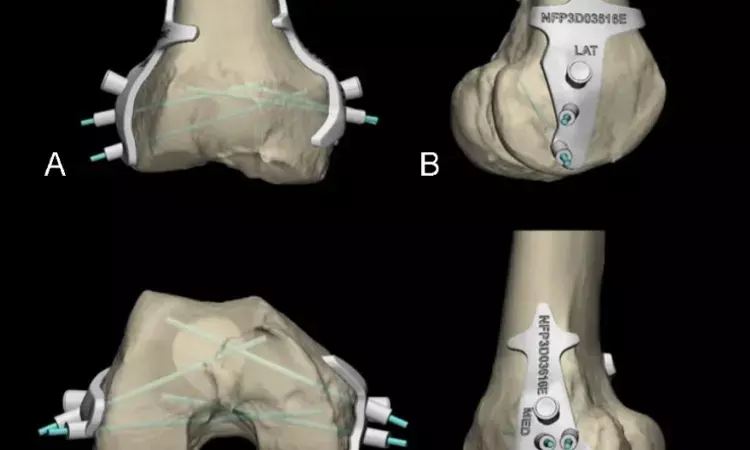- Home
- Medical news & Guidelines
- Anesthesiology
- Cardiology and CTVS
- Critical Care
- Dentistry
- Dermatology
- Diabetes and Endocrinology
- ENT
- Gastroenterology
- Medicine
- Nephrology
- Neurology
- Obstretics-Gynaecology
- Oncology
- Ophthalmology
- Orthopaedics
- Pediatrics-Neonatology
- Psychiatry
- Pulmonology
- Radiology
- Surgery
- Urology
- Laboratory Medicine
- Diet
- Nursing
- Paramedical
- Physiotherapy
- Health news
- Fact Check
- Bone Health Fact Check
- Brain Health Fact Check
- Cancer Related Fact Check
- Child Care Fact Check
- Dental and oral health fact check
- Diabetes and metabolic health fact check
- Diet and Nutrition Fact Check
- Eye and ENT Care Fact Check
- Fitness fact check
- Gut health fact check
- Heart health fact check
- Kidney health fact check
- Medical education fact check
- Men's health fact check
- Respiratory fact check
- Skin and hair care fact check
- Vaccine and Immunization fact check
- Women's health fact check
- AYUSH
- State News
- Andaman and Nicobar Islands
- Andhra Pradesh
- Arunachal Pradesh
- Assam
- Bihar
- Chandigarh
- Chattisgarh
- Dadra and Nagar Haveli
- Daman and Diu
- Delhi
- Goa
- Gujarat
- Haryana
- Himachal Pradesh
- Jammu & Kashmir
- Jharkhand
- Karnataka
- Kerala
- Ladakh
- Lakshadweep
- Madhya Pradesh
- Maharashtra
- Manipur
- Meghalaya
- Mizoram
- Nagaland
- Odisha
- Puducherry
- Punjab
- Rajasthan
- Sikkim
- Tamil Nadu
- Telangana
- Tripura
- Uttar Pradesh
- Uttrakhand
- West Bengal
- Medical Education
- Industry
3D printed patient specific instrumentation accurate tool to reproduce femoral bone tunnels in multiple ligament knee injuries

Multiple-ligament knee reconstruction techniques often involve the creation of several bone tunnels for various reconstruction grafts. A critical step in this procedure is to avoid short tunnels or convergences among them. Currently, no specific template guide to reproduce these angulations has been reported in the literature, and the success of the technique still depends on the experience of the surgeon.
Núria Fernández Poch et al conducted a study to analyze the accuracy and reliability of 3D-printed patient-specific instrumentation (PSI) for lateral and medial anatomical knee reconstructions.
10 cadaveric knees were scanned by computed tomography (CT). Using specific computer software, anatomical femoral attachments were identified:
(1) On the lateral side the lateral collateral ligament (LCL) and the popliteal tendon (PT) and
(2) On the medial side the medial collateral ligament (MCL) and the posterior oblique ligament (POL).
Four bone tunnels were planned for each knee, and PSI with different directions were designed as templates to reproduce the planned tunnels during surgery. 20 3D-printed PSI were used: ten were tailored to the medial side for reconstructing MCL and POL tunnels, and the other ten were tailored to the lateral side for reconstructing LCL and PT tunnels. Postoperative CT scans were made for each cadaveric knee. The accuracy of the use of 3D-printed PSI was assessed by superimposing postoperative CT images onto pre-operative images and analyzing the deviation of tunnels performed based on the planning, specifically the entry point and the angular deviations.
Key findings of the study:
• The median entry point deviations for the tunnels were as follows:
LCL tunnel, 1.88 mm (interquartile range (IQR) 2.2 mm);
PT tunnel, 2.93 mm (IQR 1.17 mm);
MCL tunnel, 1.93 mm (IQR 4.26 mm); and
POL tunnel, 2.16 mm (IQR 2.39) .
• The median angular deviations for the tunnels were as follows:
LCL tunnel, 2.42° (IQR 6.49°);
PT tunnel, 4.15° (IQR 6.68);
MCL tunnel, 4.50° (IQR 6.34°); and
POL tunnel, 4.69° (IQR 3.1°) .
• No statistically significant differences were found in either the entry point or the angular deviation among the different bone tunnels.
The authors concluded that – “The use of 3D-printed PSI for lateral and medial anatomical knee reconstructions provides accurate and reproducible results and may be a promising tool for use in clinical practice.”
Further reading:
Three dimensional printed patient specific instrumentation is an accurate tool to reproduce femoral bone tunnels in multiple ligament knee injuries
Núria Fernández Poch, Ferran Fillat Gomà et al
International Orthopaedics (2023) 47:1213–1219
https://doi.org/10.1007/s00264-023-05712-1
MBBS, Dip. Ortho, DNB ortho, MNAMS
Dr Supreeth D R (MBBS, Dip. Ortho, DNB ortho, MNAMS) is a practicing orthopedician with interest in medical research and publishing articles. He completed MBBS from mysore medical college, dip ortho from Trivandrum medical college and sec. DNB from Manipal Hospital, Bengaluru. He has expirence of 7years in the field of orthopedics. He has presented scientific papers & posters in various state, national and international conferences. His interest in writing articles lead the way to join medical dialogues. He can be contacted at editorial@medicaldialogues.in.
Dr Kamal Kant Kohli-MBBS, DTCD- a chest specialist with more than 30 years of practice and a flair for writing clinical articles, Dr Kamal Kant Kohli joined Medical Dialogues as a Chief Editor of Medical News. Besides writing articles, as an editor, he proofreads and verifies all the medical content published on Medical Dialogues including those coming from journals, studies,medical conferences,guidelines etc. Email: drkohli@medicaldialogues.in. Contact no. 011-43720751


